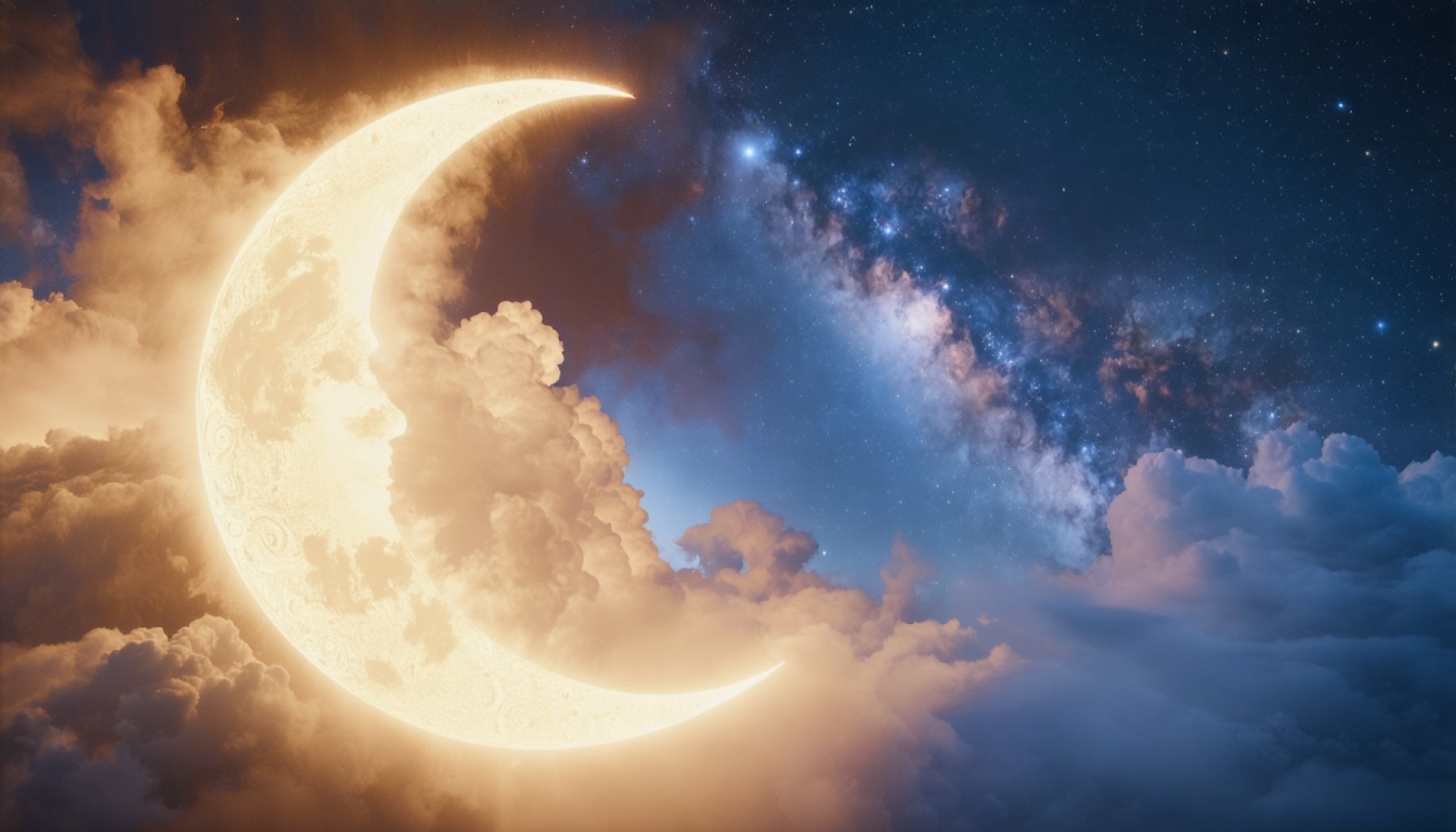- Saudi Arabia’s observatories keenly await the Shawwal crescent to signal the end of Ramadan and start of Eidul Fitr.
- A fleeting window of 7-8 minutes challenges observers to sight the crescent moon, with conditions favorable due to clear skies.
- A partial solar eclipse adds to celestial events, with predictions indicating the Shawwal crescent will remain unseen on March 29, 2025.
- Emirati astronomers confirm Ramadan extending to 30 days, making March 30 the last fast and March 31 the start of Eidul Fitr.
- For countries relying on visual sightings, Eid timing remains flexible, influenced by culture and scientific forecasts.
- The tradition of lunar observation highlights the blend of ancient practices and modern astronomy in determining religious events.
As golden twilight envelops the Arabian Peninsula, anticipation fills the air. At precise moments across Saudi Arabia’s ten observatories, experts stand ready, eyes fixed on the horizon. They await the ephemeral appearance of the Shawwal crescent—a sliver of silver in the sky that heralds the end of Ramadan and the joyous arrival of Eidul Fitr. This year, the challenge is steep: they have only a brief window, a scant 7-8 minutes, to catch a glimpse of the moon before it vanishes into the darkened sky.
At Tumair’s observatory, the drama unfolds at 6:11 PM, precisely when the sun dips below the western horizon. Just eight minutes later, the moon follows, making its quick descent as observers strain against the fading light to mark the transition. Tonight, the elements show mercy; forecasts promise clear skies and balmy temperatures of around 32°C, aiding the crucial celestial confirmation.
Meanwhile, a cosmic spectacle disrupts the usual rhythm—a partial solar eclipse crosses into view for parts of the western Arab world. On this same day, March 29, as shadows dance upon the earth below, experts have another conclusion. The International Astronomy Center states that the Shawwal crescent will elude the gaze of the Arab and Islamic worlds this evening. The moon will set before the sun, and its conjunction—a celestial meeting point—occurs post-sunset, rendering sighting impossible.
Emirati astronomer Ibrahim Al-Jarwan furthers this with precise calculations. As the Emirates Astronomy Society reviews their data, the numbers reveal a clear narrative: the Shawwal crescent shall remain hidden on March 29, 2025, leaving Ramadan to complete a 30-day cycle. Therefore, March 30 becomes the last fasting day, heralding Eidul Fitr’s light on Monday, March 31.
For nations adhering strictly to the visual sighting, Eid’s arrival awaits a confirmed lunar glimpse. Yet, twilight traditions may vary; where astronomical conditions synchronize, and conjunction preempts sunset, some may declare Eid on Sunday. Here culture intertwines with science, with practice and precision in an age-old dance reflecting human and celestial calendars alike.
In this realm where ancient traditions meet modern science, the celestial quest continues—not just for astronomers swaying with statistics, but for communities worldwide, united in observance and celebration. The takeaway is profound: while technology marches on, the rhythms of the heavens still guide us, whispering stories of time, unity, and celestial wonder across generations.
Celestial Wonders: The Art of Moon Sighting and Eid Celebrations
The Science and Tradition of Moon Sighting
Moon sighting, particularly for Islamic events like Eid al-Fitr, blends ancient traditions with modern science. Key facts about this practice include:
1. Lunar Phases and Islamic Calendar: The Islamic calendar is lunar-based, meaning months begin with the sighting of the new moon. This can be complex as the moon must be sighted locally to mark the start of months like Shawwal, which signals the end of Ramadan.
2. Factors Influencing Moon Visibility:
– Atmospheric Conditions: Dust, pollution, and humidity can obscure visibility.
– Geographical Location: Latitude impacts viewing chances, with equatorial regions usually having a better chance to sight the moon first.
– Conjunction and Elongation: The angular separation between the moon and the sun (elongation) and their alignment (conjunction) are crucial for visibility.
3. Technological Assistance: Instruments like telescopes and advanced astronomical software aid experts, but cultural and religious leaders often favor traditional naked-eye sightings.
Trends and Insights in Moon Sighting
– Astronomical Societies and Collaboration: Organizations are now collaborating internationally to unify the sighting process, incorporating cutting-edge technology and traditional practices.
– Educational Efforts: There’s a growing trend toward educating communities about the science behind lunar observations, fostering a shared understanding of celestial events.
Controversies and Cultural Nuances
1. Diverse Practices: Different Islamic communities globally follow varied criteria for moon sighting, from different combinations of naked-eye and technological verifications to distinct calculation methods.
2. Predictive Models vs. Actual Sightings: Although predictive astronomical models suggest precise calculations, cultural adherence to visual sightings can lead to varied dates for religious events.
Practical Tips for Moon Sighting
– Best Viewing Practices: View the horizon from open, dark areas away from city lights for better chances of spotting the new moon.
– Tool Utilization: Use astronomical apps or software to track moon phases and the best times for observation.
Recommendations for Enthusiasts
– Participate in Local Observatories: Join local observatories or community gatherings during moon sighting events.
– Stay Informed: Keep abreast of astronomical forecasts and community announcements.
Related Links for Further Exploration
– International Astronomy Center
– Emirates Astronomy Society
Conclusions
Modern technology, despite its advancements, is often used to complement rather than replace traditional practices, highlighting the balance between science and culture. By embracing both technological and traditional perspectives, communities can enhance understanding, cultural richness, and unity in celebrating celestial events like Eid al-Fitr.
